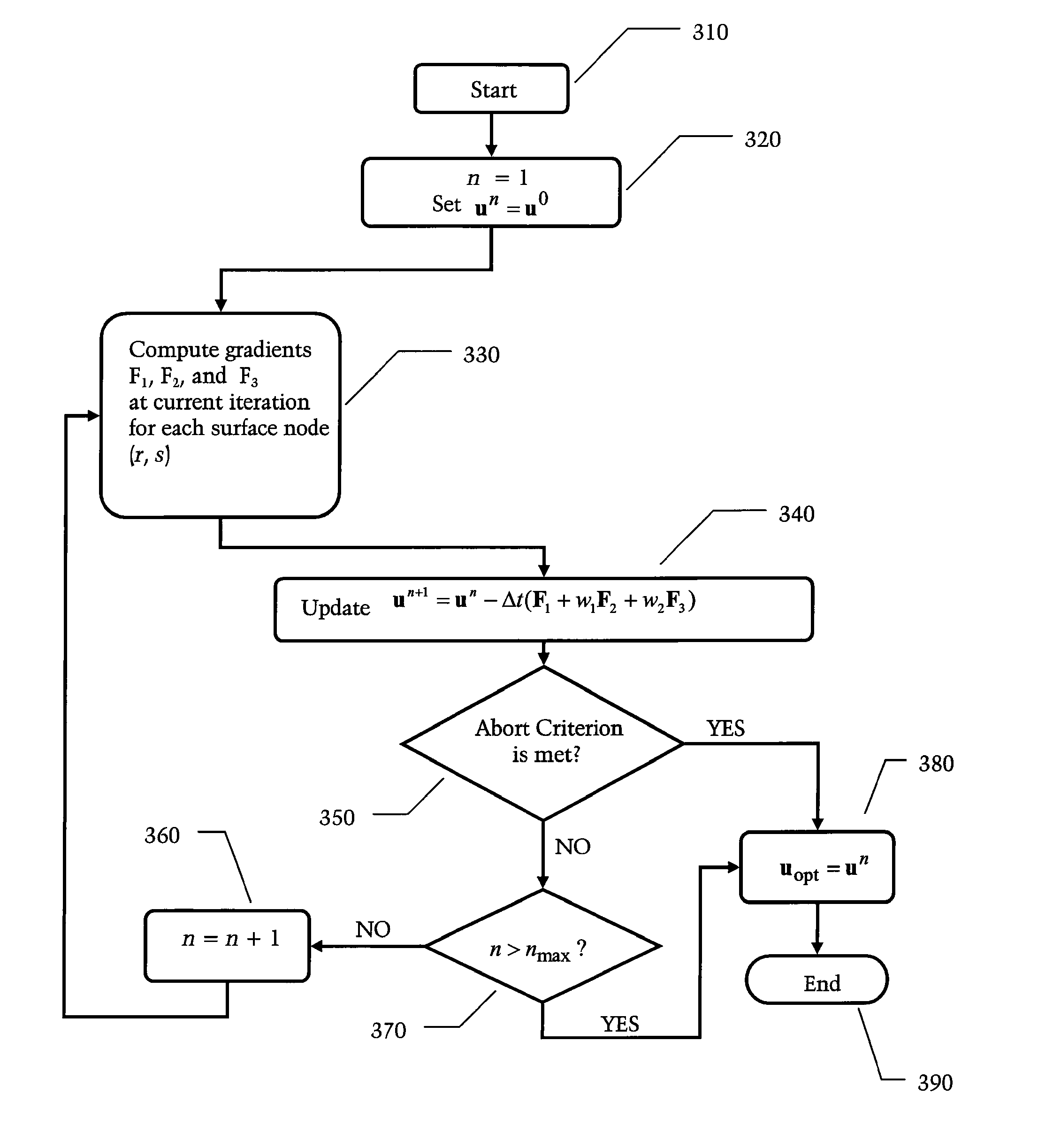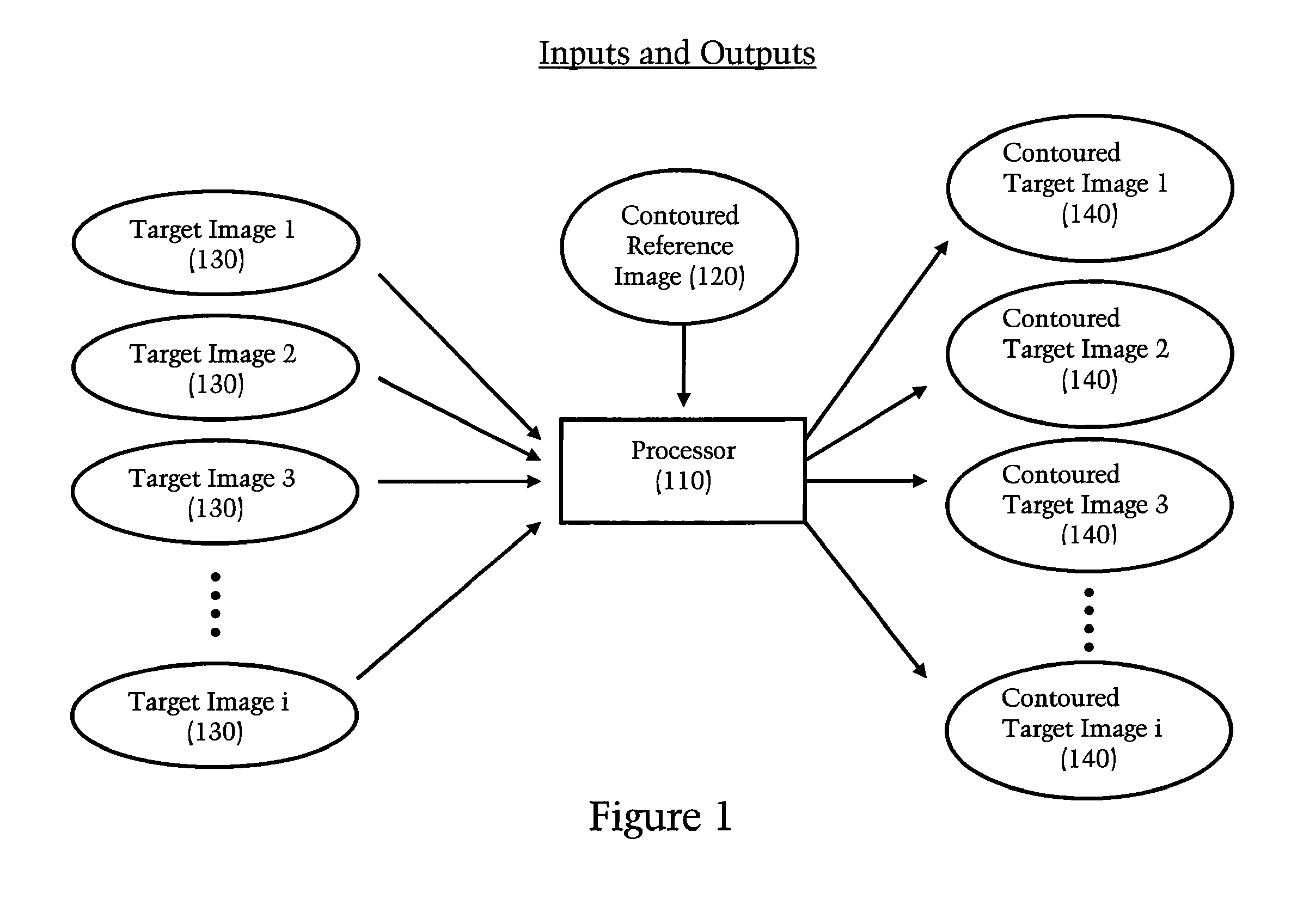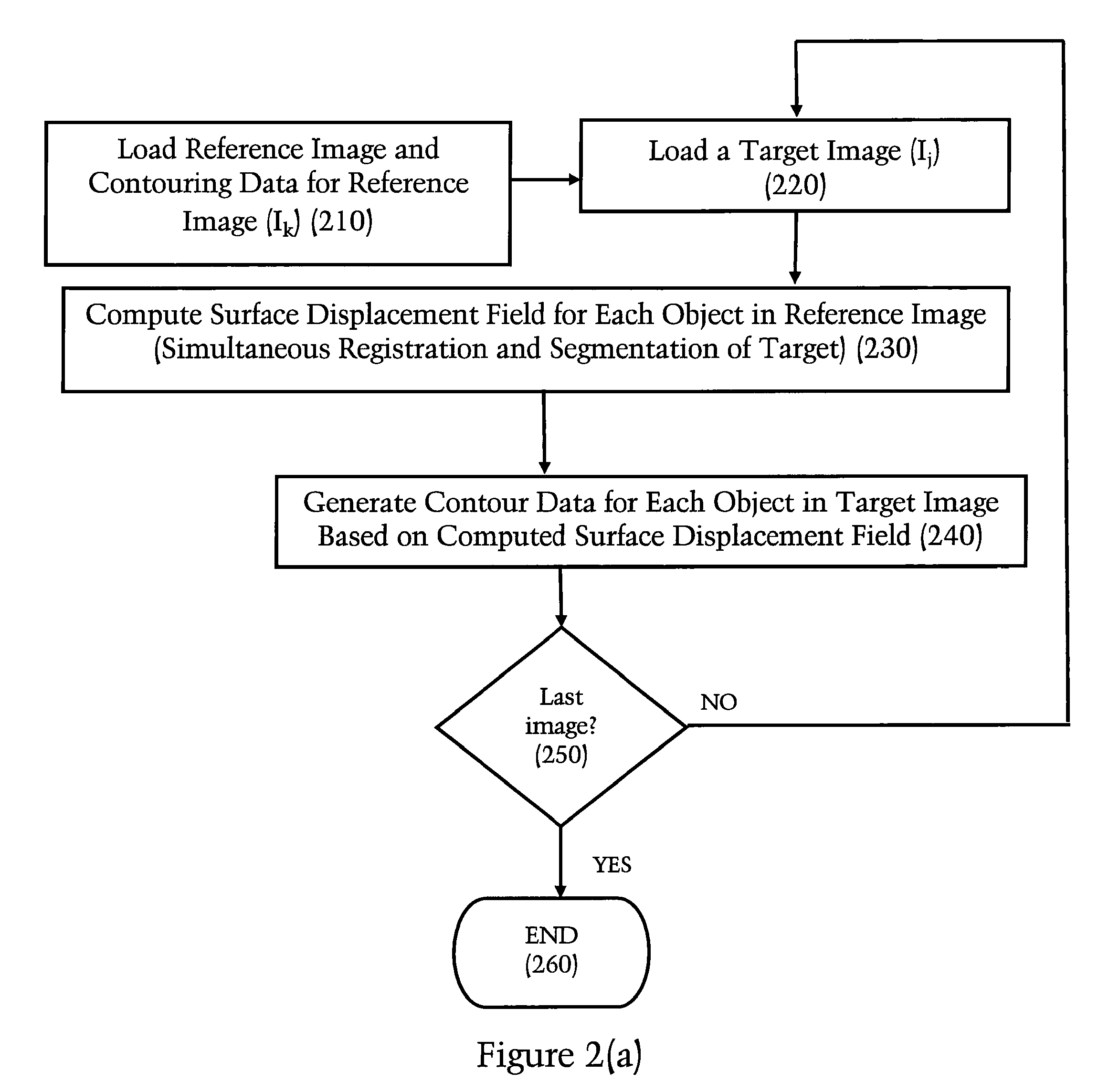Method and apparatus for efficient automated re-contouring of four-dimensional medical imagery using surface displacement fields
a surface displacement field and automatic re-contouring technology, applied in the field of medical images, can solve the problems of inaccurate contouring, long processing time, and tedious manual contouring of these images, and achieve the effects of improving computational efficiency, shortening processing time, and enhancing computational efficiency
- Summary
- Abstract
- Description
- Claims
- Application Information
AI Technical Summary
Benefits of technology
Problems solved by technology
Method used
Image
Examples
Embodiment Construction
I. Contours:
[0023]Contours are planar, closed curves C(x,y,z) which can be realized as sets of non-uniformly sampled points along the user-input stroke, {c1, . . . ,cM} (or sets of points generated by an auto-thresholding and / or auto-segmentation program), wherein the individual points are represented by ci=C(xi,yi,zi), and wherein M is the number of points in the contour. Points ci in the T planes (xz-planes) have y constant, S contours (yz-planes) have x constant, and C contours (xy-planes) have z constant.
[0024]Contours can also be parameterized by a curve length u where the curve C of length L is represented as C(x,y,z)=C(x(u),y(u),z(u))=C(u) where 0≦u≦L and C(0)=C(L).
[0025]FIG. 1 depicts a basic overview of the inputs and outputs for an exemplary embodiment of the present invention. The inputs preferably comprise (a) a reference image 120 for which contour data is available (for example, reference image 120 has been manually contoured by a doctor using known manual contouring s...
PUM
 Login to View More
Login to View More Abstract
Description
Claims
Application Information
 Login to View More
Login to View More - R&D
- Intellectual Property
- Life Sciences
- Materials
- Tech Scout
- Unparalleled Data Quality
- Higher Quality Content
- 60% Fewer Hallucinations
Browse by: Latest US Patents, China's latest patents, Technical Efficacy Thesaurus, Application Domain, Technology Topic, Popular Technical Reports.
© 2025 PatSnap. All rights reserved.Legal|Privacy policy|Modern Slavery Act Transparency Statement|Sitemap|About US| Contact US: help@patsnap.com



